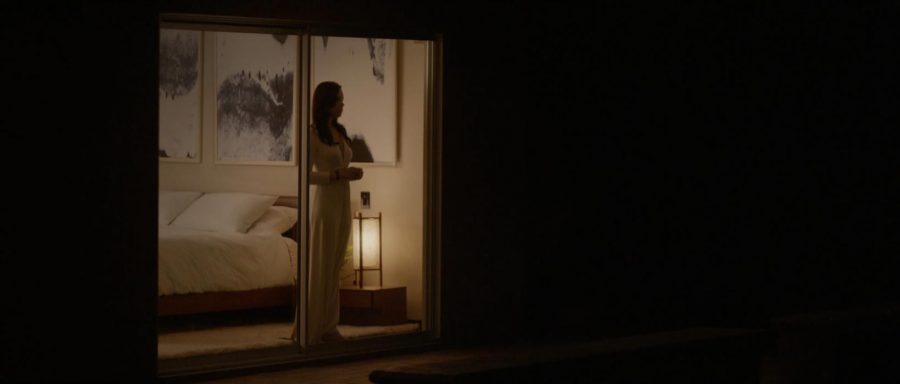Theme of the Month is an article series designed to investigate the best films that fall under a certain category. This month focuses on the topic of “closed doors:” movies that take place largely in one setting. Some do it for budgeting issues, others for claustrophobia, but there’s no denying that all of them are unbearably tense.
- “The Invitation” (2015)
The opening scene of “The Invitation” immediately involves us in the key topics of the story, helping provide insight into our lead character’s actions and motivations in the process. Divorcé Will is driving with new girlfriend Kira down a California road, on his way to a dinner party with his (now married) former wife. Distracted for a moment, he accidentally hits a coyote; though alive, the animal’s whimpers signal it may not be much longer. In a moment of sympathy, Will bludgeons the coyote with a tire iron and pushes the body aside. Cue the film’s credits: “The Invitation.”
The rest of the movie hardly lets up the smothering claustrophobic tone afterwards. Besides that opening scene, the rest of the story takes place in the married couple’s Hollywood Hills home, the spacious, modernist architecture shrinking with each passing image.
It soon becomes clear why Will’s former wife and her new husband act so strangely, expertly revealing its twists through a series of tense scenes that lead the audience to doubt whether the main character’s suspicions are paranoiac or justified.
2. “Rope” (1948)
While director Alfred Hitchcock himself may have deemed “Rope” a failure, its innovativeness and intensity remain potent to this day.
On one fateful night, just before a dinner party, two young men strangle a fellow classmate and stuff his body in a trunk, centering the corpse in the middle of the room for all of the guests to stand next to. They were inspired by the teachings of their senior, an intellectual played by James Stewart, who slowly but surely over the course of the night realizes that his lessons have provided the basis for a horrifying crime that he may or may not have played a large part in.
Composed of long takes ranging from 5 to 10 minutes, “Rope” keeps its camera strictly in one stage room, the vast Manhattan skyline serving as the background through the windows. One of the killers, acted with nervous unease by Farley Granger, becomes increasingly erratic throughout, leading the crime to become more and more revealed.
With solid performances and a thoroughly satisfying conclusion, “Rope” is the classic crime film only Hitchcock could have made.
3. “The Stanford Prison Experiment” (2015)
In 1971, Stanford University professor Dr. Philip Zimbardo conducted a study designed to investigate the psychological differences between power classes, specifically of that within a prison. Zimbardo enlisted 24 male college students, all vetted through a 70-person process, with some assigned the role of guards and others posing as inmates, all of them locked in the basement of a Stanford building. Intended to span a timeframe of two weeks, only six days were used before the experiment was abruptly canceled.
What went so horribly wrong?
Easily the most claustrophobic of these three films, “The Stanford Prison Experiment” traps you in the makeshift jail along with its prisoners, only rarely allotting the viewer time to breathe in its 2 hour runtime. Even the breaks themselves have an underlying intensity, though, as Zimbardo continues to fall deeper into his experiment, violating his moral code and compromising the health and safety of the 24 students he was supposed to protect.
A shocking number of the guards expressed borderline sadistic behavior; they shoved a prisoner into a dark closet (“solitary confinement,” they called it), removed bedding and blankets, and forced those who revolted to defecate only in a bucket. Inmates were stripped of their personalities: guards referred to them only by number, effectively removing any sense of individuality, and uniformed outfits dulled the ability to distinguish between prisoners.
Out of the 50 people who observed the experiment, only one questioned the moral and ethical stability of the practice: psychologist Christina Maslach, who later married Zimbardo. Then latter, horrified with what he had become, halted the examination… but not before permanent effects settled on the victims.
“The Stanford Prison Experiment” tells a vividly fascinating story: a case study on the abuse of power, dominance and submission, and the removal of human individuality under pressure, wrapped together in a truly captivating film.


